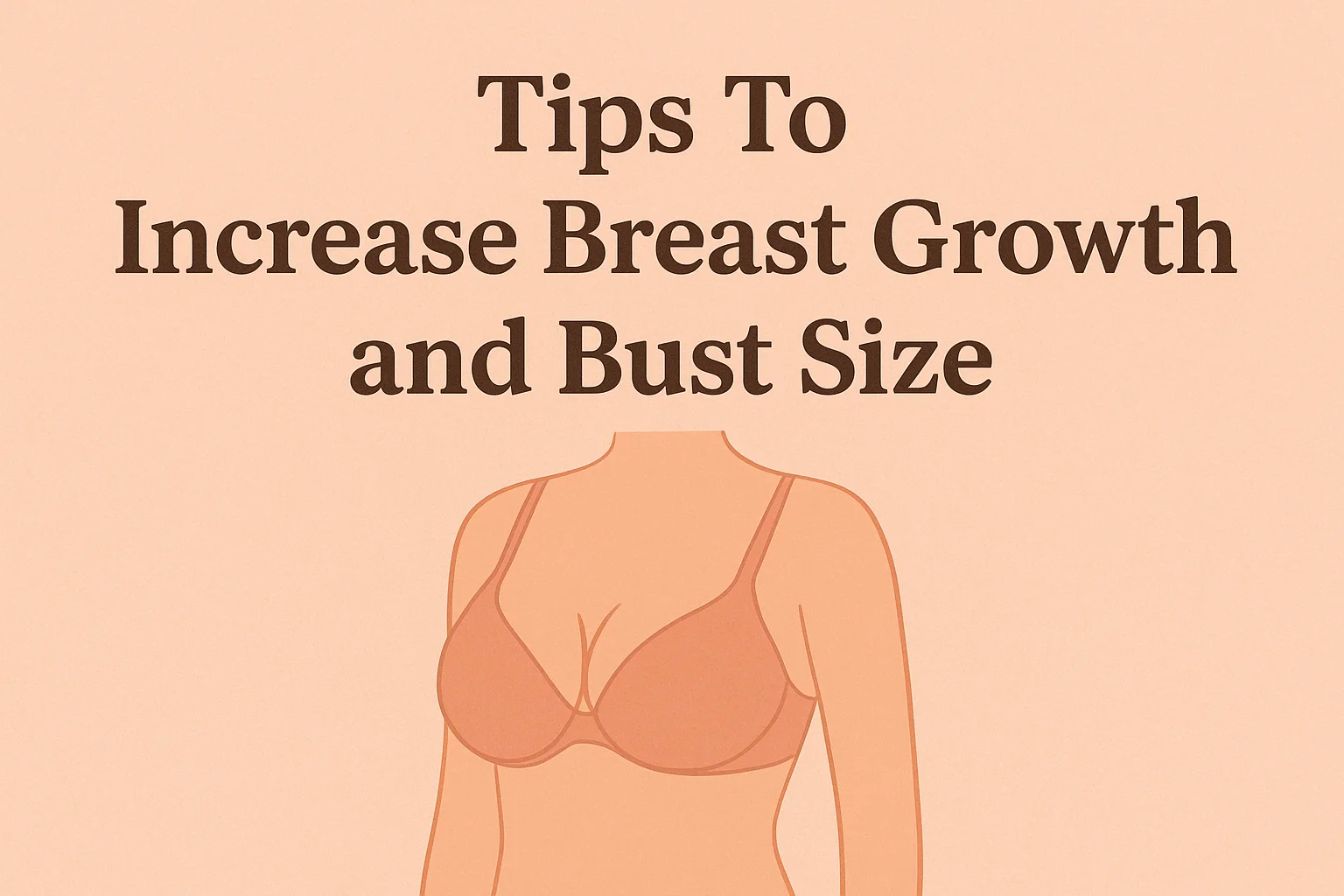Establishing the Scientific Foundation for Breast Enhancement
1.1 The Quest for Augmentation: Aesthetic and Psychological Drivers
The desire to achieve a larger bust size is often rooted in profound aesthetic and psychological considerations. For many individuals, breast size dissatisfaction can significantly impact self-esteem, body image, and social confidence, leading them to actively seek reliable and effective solutions for enhancement. In navigating the vast landscape of available options—from home remedies and topical creams to advanced surgical procedures: patients require rigorous, scientifically grounded information to make safe and informed choices.
This comprehensive guide is designed to establish a definitive, evidence-based framework for understanding breast growth and augmentation. It critically examines the physiological determinants of breast size, differentiates between methods offering marginal modification and those delivering significant, long-term change, and prioritizes patient safety through meticulous disclosure of risks associated with both commercial products and medical interventions. The discourse here is strictly confined to methods validated or reviewed by medical science, explicitly distinguishing established facts from pervasive marketing fiction.
1.2 The Determinants of Breast Size: A Hierarchy of Influence
Understanding the components that dictate natural breast size is the first crucial step toward setting realistic expectations for any enhancement endeavor.
Anatomical Components and Volume
The breast is a complex structure comprised of two principal tissue types: epithelial components (ducts and lobules) and stromal elements (adipose and fibrous connective tissue). The volume of the breast is overwhelmingly determined by the stromal components, with adipose tissue accounting for the majority of the total breast volume.
This anatomical fact holds a critical implication: any approach aiming to increase breast size, whether naturally or surgically, must target the expansion or addition of this primary adipose and stromal volume. Natural interventions are fundamentally limited because they can only influence the distribution and accumulation of fat cells that are already present.
Genetics as the Primary Factor
Breast size and overall bone structure are highly individualized traits primarily determined by genetics and inherited family characteristics. While external factors like weight and age induce changes throughout a person’s life, genetic predisposition establishes the inherent ceiling for potential breast volume. This causal hierarchy means that modifying one’s diet or exercise routine can serve only as a marginal modifier of size, subordinate to the strong influence of inherited biological characteristics. Recognizing genetics as the primary factor allows for a clinically responsible framing of enhancement expectations, avoiding disappointment with non-surgical outcomes.

Physiology, Hormones, and Life Cycle Changes
Breast tissue undergoes significant changes driven by hormonal fluctuations that occur across various stages of a woman’s life cycle.
2.1 Hormonal Triggers of Development
Breast development begins early, with the formation of the mammary ridge in utero. However, permanent and significant growth commences at puberty.
Puberty and Maturation
As a girl approaches her teen years, the ovaries begin to produce and secrete estrogen. This pivotal hormonal signal initiates the collection of fat within the connective tissue, causing the breasts to enlarge, while simultaneously spurring the growth of the internal duct system. Once ovulation and menstruation commence, the breasts continue their maturation process through the formation of secretory glands at the ends of the milk ducts, leading to the full development of glands and lobules. The rate and final size achieved during this period vary significantly for each young woman.
Reproductive Cycles and Involution
The reproductive years bring further hormonal modulation. During pregnancy, a complex interplay of hormones, including estrogen, progesterone, and prolactin, stimulates the breasts to grow larger, completing their lobuloalveolar maturation in preparation for lactation. Conversely, the transition to menopause marks a period of involution. Decreased estrogen levels cause the mammary glands and milk ducts to slowly shrink, leading to a loss of elasticity and a decrease in breast size. This tissue involution often begins subtly around age 35.
2.2 Weight Fluctuation and Bust Volume
Given that the vast majority of breast volume is composed of adipose (fat) tissue , body weight fluctuations are directly correlated with changes in bust size. Clinically, gaining weight tends to increase the size of the breasts, as fat cells expand across the entire body. Conversely, patients undergoing systemic weight loss should anticipate a reduction in overall breast size, as this adipose tissue volume decreases. This direct correlation underscores the limitation of targeted methods: systemic fat accumulation or loss affects the breast just as it affects other fatty areas of the body.
2.3 Medical Diagnosis of Underdevelopment (Hypoplasia)
In cases where breast development is significantly delayed or insufficient, a medical condition known as breast hypoplasia (or tuberous breasts) may be present. This condition can be bilateral or unilateral, characterized by a lack of lobular development and fibrous stroma resembling prepubertal tissue. While many cases are idiopathic (of unknown cause), hypoplasia can sometimes be attributed to acquired factors, such as breast radiation during childhood, trauma, or prior surgical procedures that impaired the breast bud’s growth.
For young women or adolescents presenting with signs of hypoplasia (e.g., development not starting by age 13 or highly unexpected shaping), a thorough clinical evaluation is essential. This evaluation often includes testing for hormone levels and consultation with a pediatric endocrinologist to rule out or address underlying medical causes before proceeding to elective cosmetic solutions. Furthermore, surgical planning for such cases is typically deferred until the patient’s natural development has reached its final plateau, ensuring the surgical intervention complements, rather than interferes with, natural growth. Integrating this diagnostic imperative into the treatment pathway ensures ethical clinical practice and addresses potential root medical causes before seeking aesthetic corrections.

Non-Invasive Strategies: Diet, Exercise, and External Methods
When exploring non-surgical methods for enhancement, it is crucial to temper enthusiasm with scientific realism. Many popular methods, while generally safe, offer highly marginal or temporary effects on bust size.
3.1 Dietary Interventions: Supporting Tissue Health
Certain foods are frequently cited in popular literature as having properties that promote bust growth. These claims often revolve around the food’s hormonal or antioxidant effects.
Specific foods noted include green papaya, which is purported to stimulate the development of mammary glands and breast fat tissue, an effect that is particularly known to benefit breastfeeding women. Similarly, grapefruit is mentioned for its high content of vitamin C and antioxidants, with the anecdotal claim that its consumption may assist in weight loss without causing a reduction in breast fat.
While diets rich in antioxidants and healthy fats support overall glandular and skin health, there is no robust scientific evidence to confirm that incorporating specific foods can substantially or permanently increase adult breast size beyond the natural fluctuations related to a patient’s overall weight gain or loss. Dietary choices should therefore be viewed as a method to optimize overall body health, which indirectly supports tissue vitality, rather than as a primary mechanism for volumetric augmentation.
3.2 The Impact of Targeted Exercise and Muscular Projection
Exercise offers benefits for breast appearance and projection but is often misunderstood as a tool for increasing actual breast volume.
Building Pectoral Muscles
Exercises targeting the chest—such as weight training and push-ups—build the underlying pectoral muscles. This increase in muscle bulk beneath the breast tissue physically alters the projection and contour of the chest wall. The resultant lifting and firmness can make the breasts appear larger and more prominent. The effect is one of aesthetic shaping and improved posture, creating the illusion of size increase.
The Weight Loss Paradox
The distinction between projection and volume is critical. For individuals seeking a size increase, engaging in intense exercise aimed at burning fat across the body will invariably reduce the overall size of the adipose tissue in the breasts. Therefore, a patient must consciously balance muscle gain (for projection) against the risk of systemic fat loss (for volume reduction). Exercise is an excellent tool for toning and shaping the chest but is not a method for volumetric change in the mammary tissue itself.
3.3 Mechanical and Topical Devices: Evaluating Efficacy
Topical creams, mechanical devices, and massage techniques are widely marketed for breast enlargement, yet they uniformly lack scientific validation for producing long-term results.
Breast Massage and Pumps
Breast massage is a technique recognized in medical literature, particularly for alleviating pain and improving symptoms related to breastfeeding issues, such as mastitis. However, systematic reviews confirm that robust, randomized controlled trials are lacking to establish its efficacy for permanent cosmetic size enhancement. Similarly, breast pumps and other mechanical devices are considered ineffective for lasting growth.
Creams and Lotions
The consensus among plastic surgeons and medical researchers is that breast enlargement creams are ineffective and constitute a financial waste. There is no scientific evidence demonstrating that the active ingredients, such as phytoestrogens, are absorbed in sufficient concentration when applied topically to impact deep breast tissue and stimulate growth. While some temporary puffiness may occur due to increased localized blood flow, this effect is momentary and does not constitute true, lasting tissue expansion. Claims by manufacturers promising results in as little as two weeks to two months are not substantiated by clinical evidence.
The Danger of Unregulated Supplements and Phytoestrogens
One of the most concerning non-surgical methods involves the consumption or application of supplements containing phytoestrogens. Attempts to stimulate growth using these substances introduce significant and unquantified health risks.
4.1 The Phytoestrogen Mechanism and Carcinogenesis Risk
Phytoestrogens, often derived from plants such as Pueraria mirifica (also known as white Kwao Krua) , are bioactive chemicals that mimic the activity of endogenous human estrogen. While hormone exposure is essential for breast development, high, prolonged exposure to estrogen and progesterone is clinically associated with an increased risk of breast cancer.
The critical implication of using phytoestrogen-based products is the potential increase in this risk. Since the active ingredients in these breast enlargement creams and supplements are plant oestrogens, they may elevate the risk of breast cancer. Furthermore, studies conducted in animal models, such as rats, have demonstrated that Pueraria mirifica exerts measurable estrogenic effects in the mammary gland and uterus and can promote mammary carcinogenesis. Because no scientific evidence exists regarding the long-term safety of these supplements in humans, seeking to stimulate breast growth via hormone mimicry simultaneously introduces a potentially serious, lifelong risk profile for malignancies.
4.2 Regulatory Status and Consumer Protection
The use of supplements is further complicated by a significant lack of regulatory oversight, raising questions about product quality and safety.
In the United States, the Food and Drug Administration (FDA) does not regulate dietary supplements with the same rigor applied to prescription drugs. This regulatory gap means that there is no guarantee that the contents of a supplement product align with the label claims. Consumers are advised to look for independently tested products and consult a healthcare provider, but the fundamental safety profile remains compromised.
Furthermore, specific regulatory bodies, such as the Food and Drug Administration in the Philippines, have issued explicit public health warnings against purchasing and consuming unregistered food supplements, including those containing Pueraria Mirifica, because they have not gone through the necessary evaluation process to guarantee their quality and safety. The consumption of such unauthorized products poses a direct health risk to consumers. Therefore, medical professionals strongly advise that before using any product marketed for breast enlargement, especially supplements, a physician must be consulted due to the grave, unproven long-term safety profile.
The Proven Pathways: Comprehensive Review of Surgical Augmentation
For patients seeking reliable, significant, and long-term increases in bust size, medical consensus confirms that the only effective methods are surgical: breast augmentation using implants or autologous fat grafting (AFG).
5.1 Option 1: Breast Augmentation with Implants
Breast augmentation involves the placement of saline or silicone implants beneath the breast tissue (subglandular) or beneath the pectoral muscle (subpectoral). While highly effective in achieving substantial volume increase, this procedure requires a lifelong commitment to monitoring and necessitates a thorough understanding of the associated risks.
Modern Safety and Critical Risks
The decision to undergo implant surgery requires carefully weighing the aesthetic benefits against a comprehensive set of possible risks and complications.
- Malignancy Risks: Although rare, patients must be informed of specific cancers associated with the capsule surrounding the implant:
- Breast Implant-Associated Anaplastic Large Cell Lymphoma (BIA-ALCL): A rare type of T-cell lymphoma.
- Breast Implant-Associated Squamous Cell Carcinoma (BIA-SCC): Another very rare cancer observed in the capsule.
- Systemic Symptoms (BII): Some patients report systemic symptoms collectively known as Breast Implant Illness (BII), which they attribute to their implants. These symptoms can be highly varied, including fatigue, “brain fog,” joint pain, muscle pain, and rash.
- Common Complications: More frequently encountered complications include the formation of tight scar tissue around the implant (capsular contracture), implant leakage or rupture, hematoma, infection, persistent pain, changes in nipple or breast sensation, and the possibility of revision surgery.
The Lifetime Commitment and Surveillance
It is crucial for patients to understand that breast implants are not guaranteed to last a lifetime, and future surgery will likely be required to replace one or both implants. This procedure fundamentally alters the patient’s long-term breast healthcare protocol.
The FDA explicitly mandates ongoing surveillance for silicone implants: patients should receive screening—using MRI or ultrasound—five to six years after placement, and every two to three years thereafter. Routine screenings are non-negotiable, even if the patient experiences no symptoms, as they are essential for verifying the implant’s integrity and identifying complications such as silicone leakage or asymptomatic rupture.
5.2 Option 2: Autologous Fat Grafting (AFG)
Autologous fat grafting (AFG) uses the patient’s own tissue for augmentation, offering a highly natural alternative, though typically yielding more moderate size increases than implants.
Procedure and Indications
The AFG procedure involves liposuction to harvest fat tissue, typically from the abdomen or thigh. This fat is then purified and strategically injected into recipient planes in the breast (beneath the skin, mammary gland, or pectoralis major). AFG is considered a valid surgical option for moderate breast augmentation and volume enhancement and is highly satisfactory for many patients, significantly improving quality of life. However, it is not considered an alternative to implants when the goal is a large increase in size.
Graft Retention and Variability
The primary technical challenge of AFG is graft survival. Retention rates vary significantly, with published results ranging widely from approximately 35.9% to 73%. This variability means predicting the final retained volume is complex. Research suggests that preoperative breast volume is the most critical factor influencing the fat volume retention rate. This is likely because breasts with more existing tissue mass provide a better, more vascularized recipient site for the integration and long-term survival of the transferred fat cells. Patients seeking massive increases in very small breasts may therefore experience lower retention rates compared to those seeking subtle contouring.
Specific Complications of AFG
While AFG avoids implant-related issues, it carries its own specific set of potential complications, including infection, seroma, palpable cysts, and fat necrosis (death of fat cells).
The most significant safety consideration related to AFG involves calcification. Necrosis in the center of a large fat graft can lead to cyst formation and subsequent calcification. These calcifications may create ambiguities or interfere with the accurate interpretation of diagnostic imaging, such as mammograms, making subsequent cancer screening potentially more challenging. Patients electing for AFG must ensure their healthcare team is aware of the procedure history to appropriately adjust their future screening protocols.
Comparative Analysis and Clinical Decision Matrix
Choosing the appropriate surgical method requires a careful consideration of the goals, the associated material and biological risks, and the long-term commitments inherent to each procedure.
The clinical decision matrix below provides a side-by-side comparison of the two medically proven modalities.
Table 1: Comparative Analysis of Surgical Breast Augmentation Methods
| Feature | Breast Implants (Saline/Silicone) | Autologous Fat Grafting (AFG) |
| Primary Indication | Significant volume increase (large augmentation) | Moderate volume increase, contouring |
| Material Source | Synthetic (requires regulatory testing/approval) | Autologous (patient’s own fat tissue) |
| Longevity/Maintenance | Not guaranteed for a lifetime; requires eventual revision | Permanent survival of retained fat; variable retention rate (35%–73%) |
| Specific Safety Risks | BIA-ALCL, BIA-SCC, BII, Capsular Contracture, Rupture | Fat necrosis, Palpable Cysts, Calcification (may complicate screening) |
| Required Surveillance | Mandatory FDA-recommended screening for silicone implants | Standardized screening, but radiologist must be informed of prior fat transfer |
The necessity of ongoing diagnostic surveillance represents a fundamental difference between these options. Regardless of the patient’s initial satisfaction, surgical augmentation alters the lifetime medical profile of the breast, requiring consistent clinical follow-up. For patients choosing implants, adhering to the stringent FDA-recommended screening schedule is mandatory for early detection of potential complications.
Table 2 highlights the specific clinical safety requirements that patients must accept when pursuing breast implants.
Table 2: Key Safety and Surveillance Requirements for Breast Implants
| Safety Concern | Description & Clinical Significance | FDA/ASPS Recommendation |
| BIA-ALCL & BIA-SCC | Rare cancers associated with the capsule around the implant | Ongoing clinical surveillance; immediate consultation for signs like seroma or swelling. |
| Breast Implant Illness (BII) | Systemic symptoms (fatigue, cognitive issues, joint pain) reported by patients | Open discussion with surgeon regarding potential explantation options. |
| Silicone Rupture Screening | Ruptures can be asymptomatic and require diagnostic confirmation | MRI/Ultrasound screening 5-6 years post-placement, and every 2-3 years thereafter. |
| Capsular Contracture | Formation of tight scar tissue around the implant, causing pain and distortion | May require surgical revision (capsulectomy and/or implant exchange). |
Frequently Asked Questions (FAQ)
Based on common patient queries regarding breast size enhancement, the following answers integrate clinical data and established scientific principles.
7.1 How long does it take for breasts to grow naturally?
Breast growth is staged, beginning pre-birth and continuing across the lifecycle. The most significant growth period is triggered by estrogen during puberty. This process is highly individual, but maturation and the formation of full glands and lobules generally continue throughout the teenage years and may stabilize into the early twenties. The rate of growth is different for every person.
7.2 Can certain exercises make my breasts bigger?
Exercise cannot increase the volume of breast tissue itself. The primary function of breast tissue is glandular and adipose, not muscular. However, exercises that build the pectoral muscles beneath the breast can improve posture and increase the chest’s projection, making the breasts appear firmer and aesthetically larger. It must be noted that intense fat-burning exercise may reduce overall bust volume by diminishing the breast’s adipose component.
7.3 Are breast enlargement creams or pills safe?
Scientific evidence indicates that creams are ineffective for achieving long-term size increase and offer no guaranteed results. They are generally considered a waste of money. Pills and supplements, particularly those containing phytoestrogens like Pueraria Mirifica, carry significant, unquantified health risks. Since estrogen exposure is linked to increased breast cancer risk, these hormone-mimicking plant extracts may increase that risk, and there is no scientific data validating their long-term safety. Furthermore, many supplements are not adequately regulated by the FDA, posing quality and safety hazards.
7.4 Does losing weight reduce bust size?
Yes. Because breast volume is primarily comprised of adipose tissue , systemic weight loss typically results in the reduction of overall body fat, including the fat cells within the breasts, leading to a decrease in bust size.
7.5 How effective is autologous fat grafting?
Autologous fat grafting (AFG) is a highly satisfactory method for patients seeking moderate volume enhancement and contouring. It is not appropriate for massive size increases. Efficacy is highly dependent on the surgeon’s technique and the patient’s physiology, with reported retention rates varying widely (35% to 73%). The patient’s initial breast volume is the most critical factor influencing how much of the transferred fat will survive long-term.
7.6 What are the major long-term risks of breast implants?
Beyond common risks like capsular contracture and rupture, patients must be critically aware of specific, serious long-term risks. These include the rare, serious cancers BIA-ALCL and BIA-SCC, which form in the implant capsule. Patients should also be educated about the possibility of Breast Implant Illness (BII), a collection of systemic symptoms (e.g., fatigue, joint pain) reported by some individuals. Furthermore, strict adherence to the mandatory, lifelong surveillance schedule (including routine MRI or ultrasound screening for silicone implants) is required to manage these risks.
Prioritizing Health and Informed Choice with Vitapera
The journey toward achieving desired breast size requires a pragmatic assessment of biological limitations and medical capabilities. The scientific evidence confirms that lasting, significant increases in bust size are attained exclusively through surgical modalities: breast augmentation with implants or autologous fat grafting. Such interventions are available at Vitapera All non-surgical methods, including diet, exercise, and topical creams, serve at best as marginal modifiers of aesthetic appearance or tissue health.
The pursuit of enhancement must never compromise safety. Attempts to achieve growth through unregulated supplements containing phytoestrogens introduce unwarranted and potentially serious risks to the patient’s long-term health, including a theoretical increase in lifetime cancer risk. Conversely, surgical procedures, while effective, require a clear understanding that they necessitate a lifelong commitment to safety protocols and clinical surveillance, managing risks such as BIA-ALCL, BII, and potential calcification.
Any decision regarding breast size modification must be predicated on a detailed consultation with a board-certified plastic surgeon. This professional engagement ensures that the patient’s goals are matched with the appropriate, safest, and most effective procedure, grounded in realistic expectations and a comprehensive understanding of all subsequent health and diagnostic responsibilities. Informed choice, guided by clinical expertise, remains the definitive pathway to achieving optimal aesthetic outcomes.










